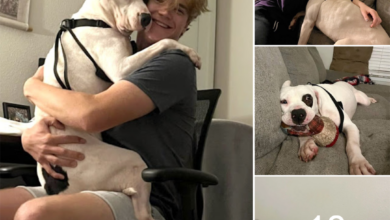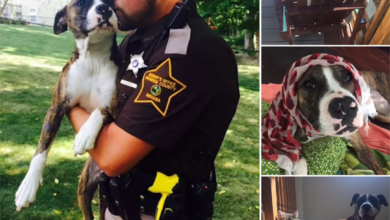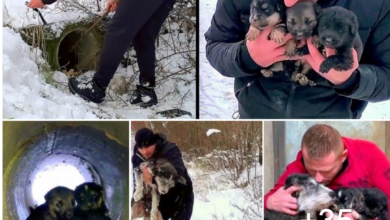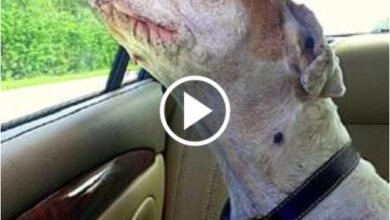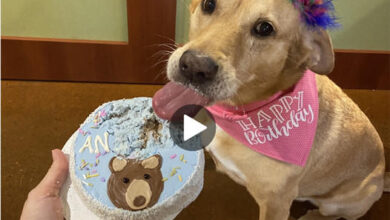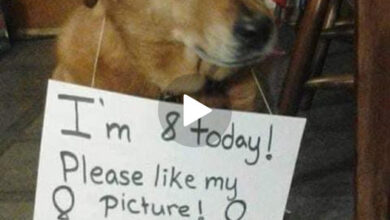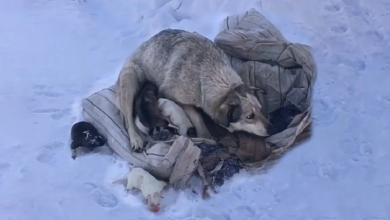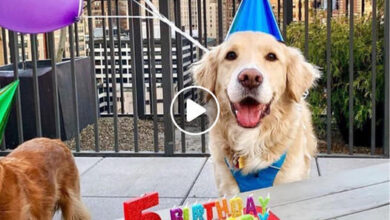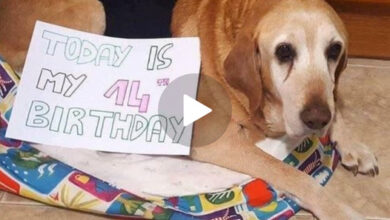Dog Not Eating? Possible Causes And Appetite Solutions

Are you concerned because your dog not eating as much as they used to? You are not alone.
A recent survey found that 31% of dog owners report their dogs have experienced a decreased appetite at some point in their lives.
While a decrease in appetite may be nothing serious, it’s important to monitor your dog’s behavior and take action if necessary.
There can be many different reasons why your dog may not be eating as much, ranging from minor issues such as a change in routine or diet to more serious health concerns.
In this article, we will explore possible causes of decreased appetite and provide solutions to help get your pup back on track with their regular eating habits.
By understanding the underlying causes and taking appropriate steps, you can help ensure your dog stays happy and healthy for years to come.
Identify the Possible Causes of Decreased Appetite
If your pup isn’t chowing down like usual, there could be a variety of reasons why their appetite has decreased. One possible cause is nutritional deficiencies. If your dog’s diet doesn’t provide them with all the necessary nutrients, they may lose their appetite or even refuse to eat altogether. This is especially true if you’ve recently changed their food or if they’re not getting enough protein.
Another possible cause of decreased appetite in dogs is health conditions. Many illnesses and diseases can affect your dog’s appetite, from minor issues like dental problems and upset stomachs to more serious conditions like cancer and kidney disease. If your dog has been experiencing symptoms like vomiting, diarrhea, lethargy, or weight loss along with their decreased appetite, it’s important to take them to the vet as soon as possible for a diagnosis.
To identify the cause of your dog’s decreased appetite, it’s important to monitor their behavior closely. Keep track of how much they’re eating (or not eating), when they’re eating, and any other changes in behavior that might point towards an underlying issue. By doing so, you’ll be better equipped to help your furry friend regain their healthy appetite and get back to feeling like themselves again.
Monitor Your Dog’s Behavior
Keep an eye on how your pup is acting to assess what’s going on, and make sure they’re not just feeling ‘off their game’. Observation tips are essential in identifying potential causes of decreased appetite.
Take note of any behavioral changes such as lethargy, vomiting, diarrhea, or abnormal thirst. These symptoms can be indicative of underlying health issues that need immediate attention.
It’s also important to monitor your dog’s eating habits. Observe if they have a reduced interest in food or if they completely refuse to eat. If your pup has been skipping meals for more than 24 hours, it may be time to seek veterinary care.
Alongside monitoring the quantity of food consumed, take note of any changes in their feeding routine or preferences.
Another way to observe if there’s something wrong with your dog’s appetite is by checking their weight regularly. If you notice a significant drop in their weight without any explanation, this could indicate a loss of appetite and may require further investigation from a veterinarian.
By keeping an eye on your dog’s behavior and eating habits closely, you can determine whether it’s just temporary or something that requires professional assistance from a vet.
In case these observation tips lead you to believe that there might be an issue with your dog’s appetite, it’s best to consult with your veterinarian about possible solutions and treatments for the underlying cause.
Consult with Your Veterinarian
Don’t hesitate to seek the advice of your vet if you suspect something is wrong with your furry friend’s appetite. It’s important to remember that dogs rely on their owners to take care of them, and many health issues can affect their eating habits. Regular check-ups are key in preventing potential problems from becoming more serious, so make sure you schedule appointments with your veterinarian on a regular basis.
In addition to regular check-ups, it’s also important to understand your dog’s body language. Dogs communicate through their behavior and actions, so paying attention to any changes in their demeanor can help identify any underlying health issues. If they seem lethargic or disinterested in food, this could be a sign that something is wrong.
If you’ve noticed a change in your dog’s appetite and behavior, consulting with your veterinarian is the best course of action. They can determine whether there is an underlying medical condition causing the problem and recommend appropriate treatment options. From there, you may need to adjust your dog’s diet or try different feeding techniques to encourage them to eat regularly again.
Now that we’ve discussed the importance of seeking veterinary advice and understanding your dog’s body language, let’s move on to ways you can adjust your dog’s diet to improve its appetite and overall health.
Adjust Your Dog’s Diet
Revamp your furry friend’s meal plan to nourish their body and fuel their wagging tail with energy and vitality. If your dog isn’t eating, it may be time to switch up their kibble.
Look for high-quality dog food that contains real meat as the first ingredient, instead of fillers like corn or wheat. Avoid artificial colors, flavors, and preservatives that can negatively impact your pet’s health.
In addition to switching kibble, consider adding supplements to your dog’s diet. Omega-3 fatty acids are beneficial for skin and coat health, while probiotics can help improve digestion and boost the immune system. Talk to your veterinarian about which supplements are best for your dog’s specific needs.
By adjusting your dog’s diet with quality food and appropriate supplements, you can help encourage their appetite and overall health. However, if these changes don’t result in an improvement in appetite, it may be necessary to explore other causes with the guidance of a vet.
Now let’s move onto how changing your dog’s feeding routine could also make a difference.
Change Your Dog’s Feeding Routine
Mixing up your furry friend’s mealtime routine can be a great way to stimulate their appetite. Try feeding them at different times of the day or changing the location of their food bowl. This will help to keep things interesting for them and may encourage them to eat more.
Another technique that you could try is reducing the frequency of their meals. If you usually feed your dog three times a day, try cutting back to two meals instead. This will give your dog more time between meals to build up an appetite and may make them more excited about eating when it is time for their next meal.
It’s also important to note that some dogs prefer smaller, more frequent meals throughout the day instead of one or two larger ones. Experiment with different feeding techniques until you find what works best for your furry friend.
By adjusting their feeding routine, you may be able to get them excited about eating again and prevent any further loss of appetite.
Changing up your dog’s feeding routine can be an effective strategy in encouraging them to eat more. However, if changes in diet and feeding habits don’t seem to work, it’s important not to rule out other causes such as stress or anxiety as potential reasons why your dog has lost interest in food.
Address Stress and Anxiety
If your furry friend seems uninterested in their food, you might want to consider addressing any stress or anxiety they may be experiencing. Dogs are sensitive beings and can easily become stressed from changes in their environment such as moving to a new home or being around unfamiliar people.
Anxiety can also arise from separation anxiety when you leave them alone for long periods of time. Relaxation techniques such as massage and aromatherapy can help alleviate stress and anxiety in dogs. Behavioral training is another effective way to help reduce anxiety levels by teaching your dog how to cope with stressful situations.
For example, if your dog becomes anxious during car rides, you can slowly introduce them to short trips and gradually increase the duration over time. Providing support and care for your furry friend is important in maintaining their overall health and well-being.
This includes ensuring they have a comfortable living space, plenty of exercise, and socialization opportunities. By addressing any stress or anxiety they may be experiencing, you can help improve their appetite and ensure that they continue to enjoy mealtime with you.
Provide Support and Care
To provide support and care for your furry friend, it’s important to show love and affection. This can be done through cuddles, petting, or even just spending quality time together.
Encouraging exercise is also crucial for keeping your dog healthy both physically and mentally. Taking them on walks or playing fetch are great ways to get them moving.
Lastly, remember to be patient and persistent in any training or behavior modification efforts. Consistency and positive reinforcement can go a long way in building a strong bond with your pup.
Show Love and Affection
You can always show your furry friend love and affection to help stimulate their appetite. There are many ways you can do this, such as spending more time with your dog by playing games or going for walks.
Not only does this increase the bond between you and your pet, but it also helps them feel happier and more relaxed, which in turn can encourage them to eat.
Another way to show affection is through grooming. Brushing your dog’s fur not only keeps it clean and shiny, but it also promotes circulation and relieves stress.
Additionally, giving your dog a massage or cuddling with them can release endorphins that make them feel good and increase their appetite.
Encouraging exercise is another important step in helping your dog regain their appetite. By taking them on daily walks or engaging in other physical activities together, you can not only improve their overall health but also boost their mood and energy levels.
This will help stimulate their appetite naturally, making mealtime a more enjoyable experience for both you and your furry companion.
Encourage Exercise
Get moving with your furry friend and enjoy the benefits of exercise together. Outdoor activities such as hiking, running, and swimming are some great ways to keep you and your dog active. You can also try playing fetch or frisbee in the park.
Not only will this help your dog burn off energy, but it will also provide an opportunity for bonding and socialization. In addition to providing playtime fun, encouraging exercise in your dog can also help establish healthy habits and improve their appetite.
Regular physical activity stimulates digestion, which could lead to a healthier appetite for your pup. To stay motivated, try setting goals for yourself and your dog. Challenge each other to go on longer walks or runs every week.
Remember that consistency is key when establishing any new habit, so be patient and persistent with your workout routine before expecting results in terms of appetite improvement.
Be Patient and Persistent
Be patient and persistent with your exercise routine – it will lead to better results for you and your furry companion. It can be frustrating when your dog doesn’t seem interested in exercise or playing, but remember that every dog is different. Some may take longer to warm up to a new routine or activity, while others may need more time to build endurance.
To stay positive and consistent with your exercise routine, try these tips:
- Start small – don’t overwhelm yourself or your dog with too much activity at once.
- Mix it up – variety keeps things interesting for both you and your dog.
- Reward good behavior – praise and treats can motivate your dog to continue exercising.
- Stay accountable – find a workout buddy or join a class to keep you on track.
Building an exercise routine takes time and patience, so don’t give up if you don’t see immediate results. Instead, focus on small improvements over time. With consistency and positivity, you’ll soon notice the benefits of regular exercise for both you and your furry friend!
Conclusion
Now that you’ve learned about the possible causes of your dog’s decreased appetite and some solutions to address it, remember to always monitor your furry friend’s behavior and consult with your veterinarian for any concerns.
Just like humans, dogs also go through phases where their appetites may fluctuate. Remember, a healthy diet is vital for your dog’s overall well-being.
Address any stress or anxiety that may be affecting their appetite as well. By providing support and care, you can help your furry companion get back to enjoying their meals again in no time.
So keep an eye on them, show them some love, and watch them wag their tails in appreciation!
Read more:
